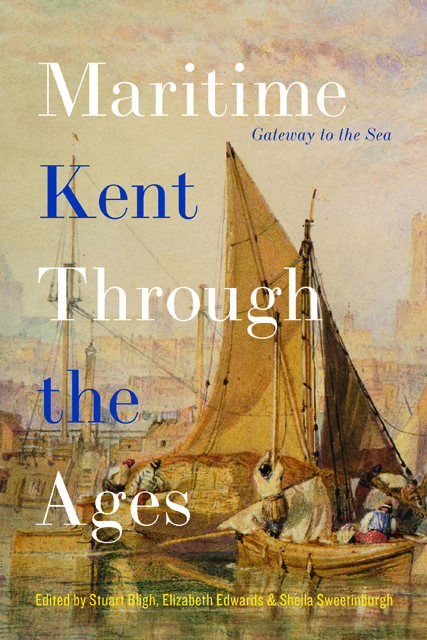2 - Kent’s Changing Coastal Landscape: A View across Space and Time (or ‘Where the Land Meets the Sea’!)
Published online by Cambridge University Press: 20 December 2023
Summary
Geographically, Kent’s position close to France has always made it a significant point of entry into Britain from all over Europe. Some of the entrants have been ‘aggressive’ invasions, so the fact that Kent’s borders are predominantly coastal has resulted in a wide range of coastal fortifications and defence systems that can still be found in a large number of locations that include Roman fortifications at Hythe, Dover, Richborough and Reculver, the medieval Cinque Port fortifications at Sandwich, Dover, Hythe and New Romney, later added to by Henry VIII in 1539–40 with the forts at Walmer, Deal and Sandown, through the Napoleonic defences to radar stations and anti-aircraft guns set up in anticipation of, and during, World War II. However, not all movement in and out of Kent was unwanted and significant trade routes developed, ensuring Kent became an important maritime county, the detail partly depending on how the physical environment changed over space and time.
Kent has a wide range of coastal environments largely due to a varied geology and its influence on relief, but also because of its geographical location with coastlines facing north and south. While many think of coastal erosion as the largest cause for change over time, in Kent sediment deposition has also been important and both have had, and will have, significant impacts on society and its use of the coast.
Kent’s Coastal Geology
The coastal geology of Kent is relatively simple (Figure 2.1). It is dominated by north-east dipping Cretaceous strata of the North Weald and Palaeogene strata of the southern London Basin. The sub-parallel nature of the strata exposed at the surface and the relatively rapid lithological changes from sands to clays and back again, together with the chalk, has a strong influence on the relief of the coastline.
The oldest strata seen at the coast is the Cretaceous Weald Clay, exposed at Hythe and visible further west as an ancient degraded cliff line behind Romney Marsh, although the western end of this cliff line is formed of older Hastings Beds. As the coastline is followed east and north marine erosion exposes the full sequence of the Upper Cretaceous strata, the most prominent of which is the Chalk of the truncated North Downs which form the ‘classic’ White Cliffs of Dover from Folkestone to just north of Kingsdown.
- Type
- Chapter
- Information
- Maritime Kent through the AgesGateway to the Sea, pp. 25 - 82Publisher: Boydell & BrewerPrint publication year: 2021

